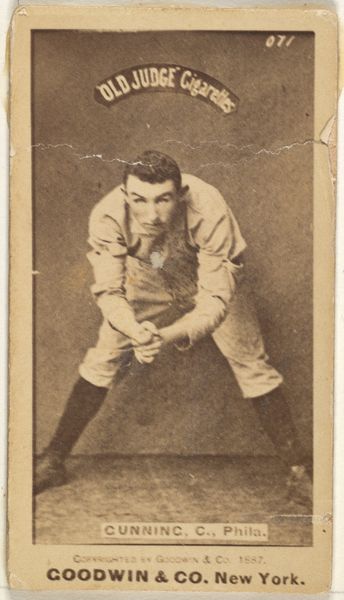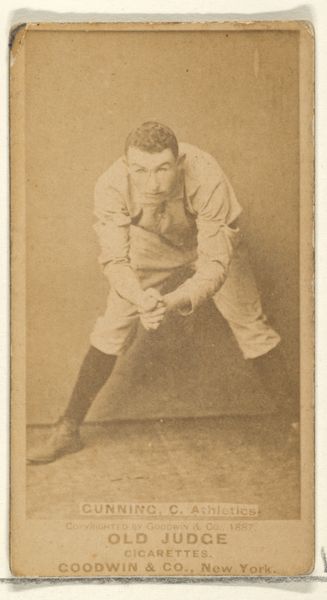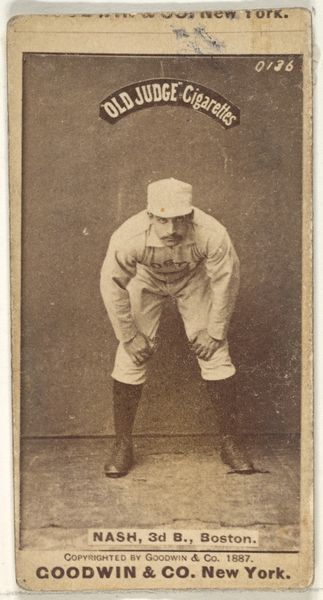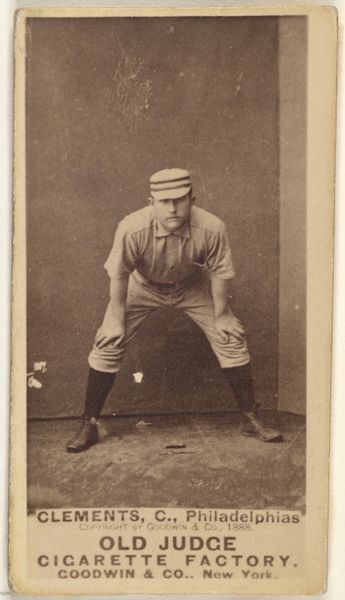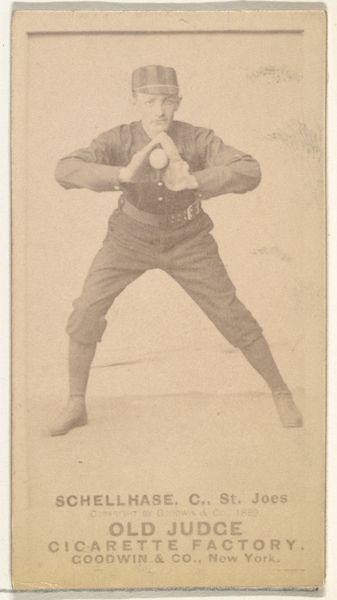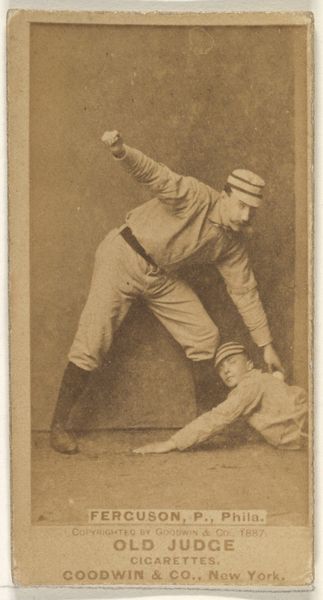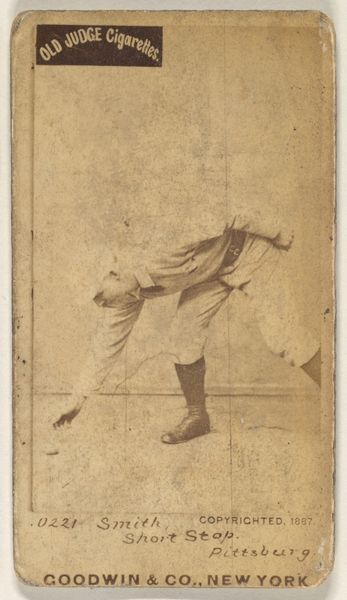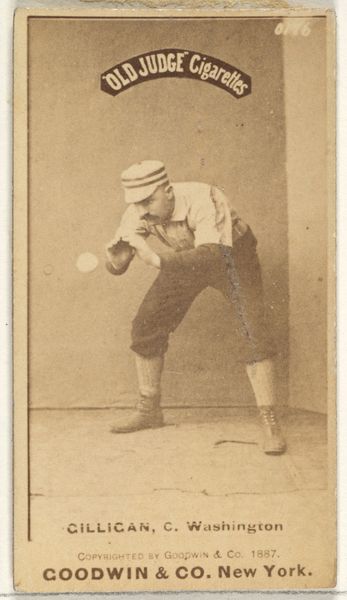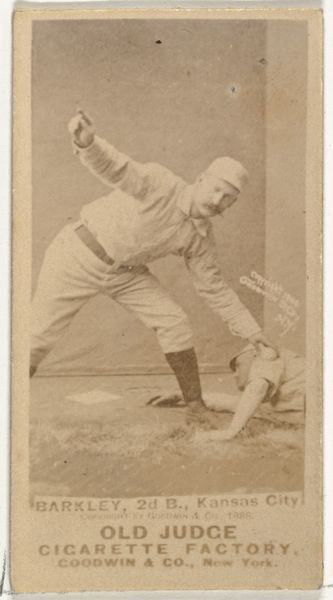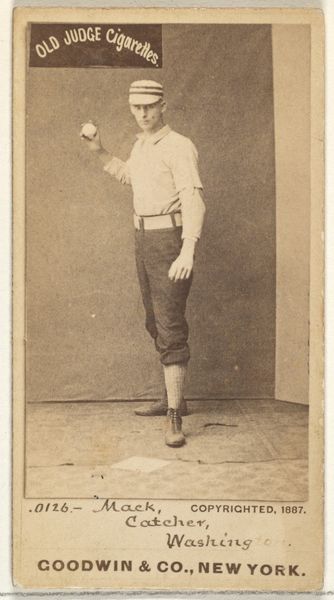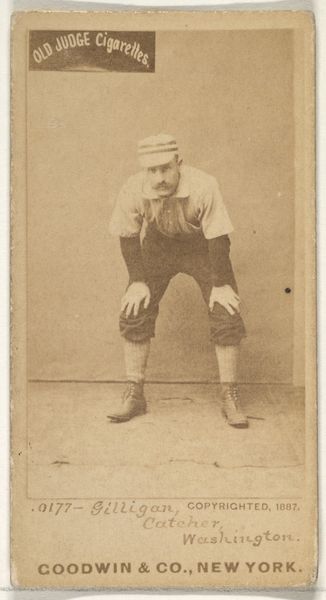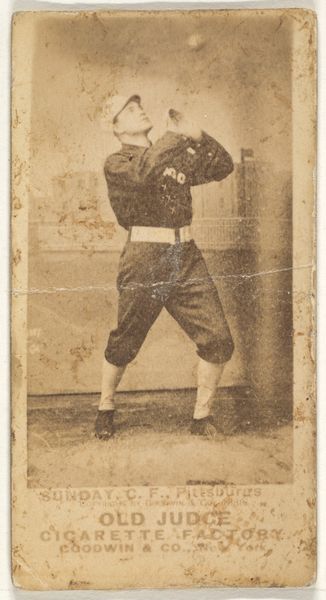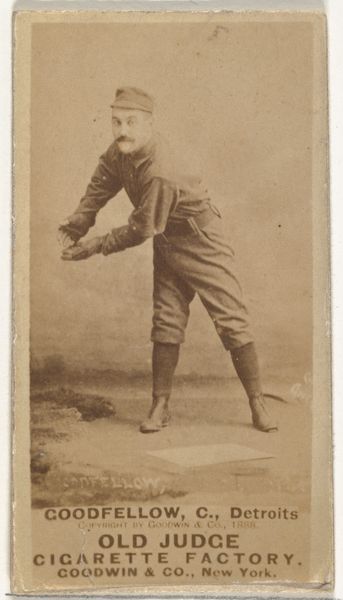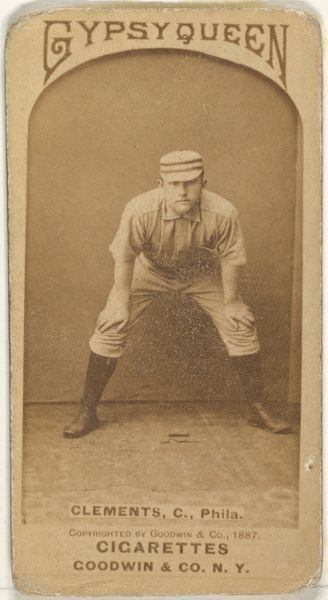
Thomas Francis Gunning, Catcher, Philadelphia, from the Old Judge series (N172) for Old Judge Cigarettes 1887
0:00
0:00
drawing, print, photography, albumen-print
#
portrait
#
drawing
# print
#
figuration
#
photography
#
19th century
#
men
#
genre-painting
#
albumen-print
Dimensions: sheet: 2 11/16 x 1 3/8 in. (6.9 x 3.5 cm)
Copyright: Public Domain
Curator: There's a powerful stillness about this image; a tangible anticipation. It reminds me of classical Greek sculptures, figures poised before action. Editor: This is a baseball card from the Old Judge series produced in 1887 by Goodwin & Company. It features Thomas Francis Gunning, a catcher for Philadelphia, and it's a surprisingly compelling portrait, made with albumen print. Curator: Ah, that makes sense. The albumen gives it that almost sepia, dreamlike quality, a layering of time and exposure to make him monumental. Notice his expression – so intense, locked in on the pitcher perhaps? The image reduces all of this anticipation down to the player. Editor: And it speaks to how the commodification of sports and the representation of athletes began taking shape. These cards, inserted into cigarette packs, democratized access to fame, but also leveraged athletes' images to promote a product, inextricably linking them to consumption and capitalism. They transformed athletes to pop culture, at the time. Curator: That's a great point. They become almost modern-day icons. And yet, looking at the detail, despite the print's purpose as advertising, there is dignity. The framing and pose, especially for a commercial print, hints at classicism - heroes in the making. Do you feel it is like propaganda for that reason? Editor: Not in the militaristic sense, but definitely a propaganda of aspiration. These cards promoted the 'American dream' narrative – the idea that anyone could achieve greatness through hard work, and athleticism, while smoking a good cigarette. Look at the fact that he looks disheveled and a bit worn down; that speaks to his role as an underrepresented class. I feel for his role as being commodified by being on a cigarette carton. Curator: I understand. While there is that undercurrent, that commercial intent is inescapable, this particular image feels different. The man’s energy, gaze and strength transcend its original, promotional context. Editor: I agree there's an element of genuine respect, but the context complicates any simple interpretation. The relationship between commercial art and portraiture, class and sports – these layers add richness to what appears to be just a simple baseball card. Curator: It’s an icon transformed by history, culture and commerce—resonating with all of those tensions, those stories and memories, still captured in his stance. I didn’t see that when first I looked, thank you. Editor: Thank you too, that connection to Greek sculptures makes me look at it from a completely different point of view. A beautiful point.
Comments
No comments
Be the first to comment and join the conversation on the ultimate creative platform.
